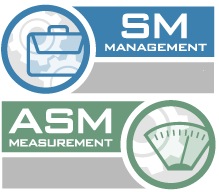SM/ASM 2002 - Software Management & Applications of Software Measurement

PRESENTATIONS
|
SM/ASM 2002: The Business Case for Software Quality
Each generation of technology-from mainframe to the Internet-creates many opportunities for businesses to try new things. But with uncharted territory comes exponentially increased risks. One way to reduce risk is to implement effective software quality processes. However, the investment required to improve development and testing infrastructures can be significant. Richard Bender addresses fourteen major areas of opportunity that underscore why this investment is critical if an organization is to succeed. |

Richard Bender, Bender & Associates |
|
Software Customer Satisfaction Surveys
Satisfying our customers is an essential element to staying in business in this modern world of global competition. We must satisfy and even delight our customers with the value of our software products and services to gain their loyalty and repeat business. Customer satisfaction is therefore a primary goal of process improvement programs. So how satisfied are our customers? One of the best ways to find out is to ask them using Customer Satisfaction Surveys. |

Linda Westfall, The Westfall Team |
|
Software Metrics State of The Practice
This presentation reviews the results of KLCI's Fourth Annual "best practices" study, including: Metrics "Best Practices"; Spending benchmarks for software metrics; Benefits of software metrics; Software measurements used; and Tools for software metrics. |
|
|
Software Sizing: There is an Easier Way
Project managers and software engineers need to accurately calculate delivery dates and resource needs for their software. This means they have to measure the size of the requirement, and estimate how much it will require in time and expense. But is there a sizing technique that's both effective and efficient? Popular sizing techniques such as the function point method can be difficult and labor intensive. However, there are alternative methods that produce quicker results, often without compromising accuracy. |

David Herron, The David Consulting Group |
|
Solid Software: Is it Rocket Science?
While we can't guarantee that our software will never fail, we can take serious steps to reduce the risk. The toughest kind of system to build involves safety-critical software where the reliability requirements are extremely strict-and whose failure puts lives in jeopardy. Shari Lawrence Pfleeger looks at what "solid software" means, and explores ways we can achieve it. She examines solid software within the context of the proposed National Missile Defense System. |
|
|
Sorting Out Six Sigma and the CMM
While the Capability Maturity Model has become widely accepted as an approach to software process improvement, Six Sigma is becoming increasingly popular in manufacturing and service organizations. This has resulted in some confusion over methods and conflicts for resources. However, the two approaches are actually synergistic. |
|
|
Speaking to Your Management: What Do You Do When They Do Not Listen
This presentation explains some of the language barriers and experience barriers between management and quality assurance professionals. |

Ed Weller, Software Technology Transition |
|
Team-Based Development: Truth from the Trenches
As software professionals, we deliver products that are the totality of the services, documentation, software, and hardware required to produce a solution for customers. But how often do we find ourselves ready to deliver a software product, yet we still don't have the services to support it? And how often does a product reach the testing phase even though it's lacking some critical requirements? Team-based management is a solution to these common-but major-problems. |
|
|
Teams, Governance, and the Evolution of Social Systems
While there are good reasons to use teams for software projects, there are also many well-documented challenges and pitfalls. One of the most important decisions for any team is the governance model they choose to abide by. By examining how social systems evolve and the different types of decision-making models they use, we can successfully modify our team approach, especially when work-like software development-is technical and creative in nature. |
|
|
Understanding Variation and Stability: The Key to Managing Your Software Process
The control chart is a form of instrumentation that acts like a pressure gauge in the world of software development. It provides critical data to help guide the decisions made by software engineers and managers. This presentation shares the results of studies using statistical process control analysis to monitor and adjust software process improvement activities. It also highlights the correlation between the use of control charts and improved processes. |
|


